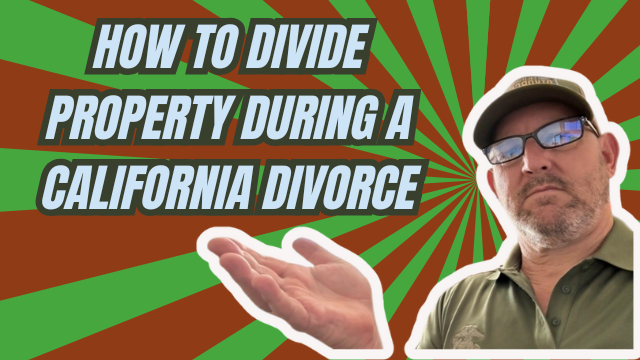How to Divide Property During a California Divorce
Hi, I’m Tim Blankenship from Divorce661. In this post I’ll walk you through how property is divided in a California divorce, why financial disclosures matter, and practical steps you can take to reach a fair, court‑approved settlement. Whether you’re just starting the process or trying to avoid unnecessary conflict, this guide covers the essentials you need to know.
Why California’s community property rules matter
California is a community property state. That means most assets and debts acquired during the marriage are considered community property and are generally split 50/50 on divorce. This rule is designed to make division fair, but it also makes it important to understand the difference between community and separate property.
Community property vs. separate property
- Community property: Assets and debts acquired during the marriage (for example, paychecks, a car purchased while married, or bills run up on a joint credit card).
- Separate property: Property you owned before marriage, or property received during the marriage as a gift or inheritance that was kept separate (for example, an inheritance deposited into an individual account and never commingled).
Note: Separate property can become community property if it’s commingled with community assets (for example, depositing an inheritance into a joint account and using it for household expenses). Tracing and documentation are key when you need to prove separate ownership.
Step-by-step: How to divide property fairly
1. Make a complete inventory of assets and debts
Start by listing everything: homes, cars, bank and brokerage accounts, retirement accounts, pensions, business interests, personal property, credit cards, mortgages, loans, and other debts. A thorough list is the foundation for a fair division.
2. Classify each item as community or separate
Go through the inventory and classify each asset and debt. Examples:
- A car bought during the marriage is typically community property.
- An inheritance received during the marriage is generally separate property—unless it was commingled.
3. Exchange required financial disclosures
California requires full financial disclosure in every divorce. Two key documents commonly used are:
- Schedule of Assets and Debts: A detailed list of property, accounts, and liabilities.
- Income and Expense Declaration: A statement of current income and regular expenses to show each party’s financial situation.
These disclosures create transparency and help both sides reach a realistic agreement. Hiding assets or providing incomplete information can cause delays and legal problems.
4. Negotiate a mutually agreeable settlement
Most divorces are resolved by agreement. Negotiation and compromise are essential. Examples of practical tradeoffs:
- One spouse keeps the house; the other receives a larger share of retirement accounts.
- One spouse takes primary ownership of a business; the other receives cash or other assets to balance the split.
Those tradeoffs should be put into a written settlement so the court can approve the division and your agreement becomes enforceable.
5. Draft an enforceable Marital Settlement Agreement
A clear, well‑drafted Marital Settlement Agreement (MSA) sets out who gets what, how debts will be paid, and any timelines or buyout procedures. The court generally approves an MSA that’s fair and properly executed, avoiding costly litigation.
Real-world example
We recently helped a California couple divide their house, cars, and retirement accounts fairly. By identifying all assets, exchanging full financial disclosures, and drafting a clear settlement, the court approved everything with no delays. This is exactly the process we use to keep divorces simple, fair, and conflict‑free.
Common pitfalls to avoid
- Failing to disclose accounts, vehicles, or debts.
- Commingling separate property without records to trace its origin.
- Agreeing verbally instead of documenting the settlement in an enforceable MSA.
Checklist: What to gather before you start
- Bank and investment account statements
- Recent pay stubs and tax returns
- Retirement and pension statements
- Deeds, titles, and mortgage statements
- Credit card and loan statements
- Documentation of gifts, inheritances, and pre‑marriage property
Why work with Divorce661?
- Flat‑fee divorce services designed for amicable separations
- Clear, enforceable Marital Settlement Agreements
- 100% remote service across California
- Experience getting court approval the first time
If you want help dividing property fairly and efficiently, visit Divorce661.com to schedule a free consultation. We’ll help you keep the process simple, transparent, and conflict‑free.
Conclusion
Dividing property in a California divorce doesn’t have to be overwhelming. Understand whether property is community or separate, exchange full financial disclosures, negotiate with clear tradeoffs, and document the agreement in an enforceable Marital Settlement Agreement. With proper preparation and the right guidance, you can reach a fair outcome that the court will approve.

